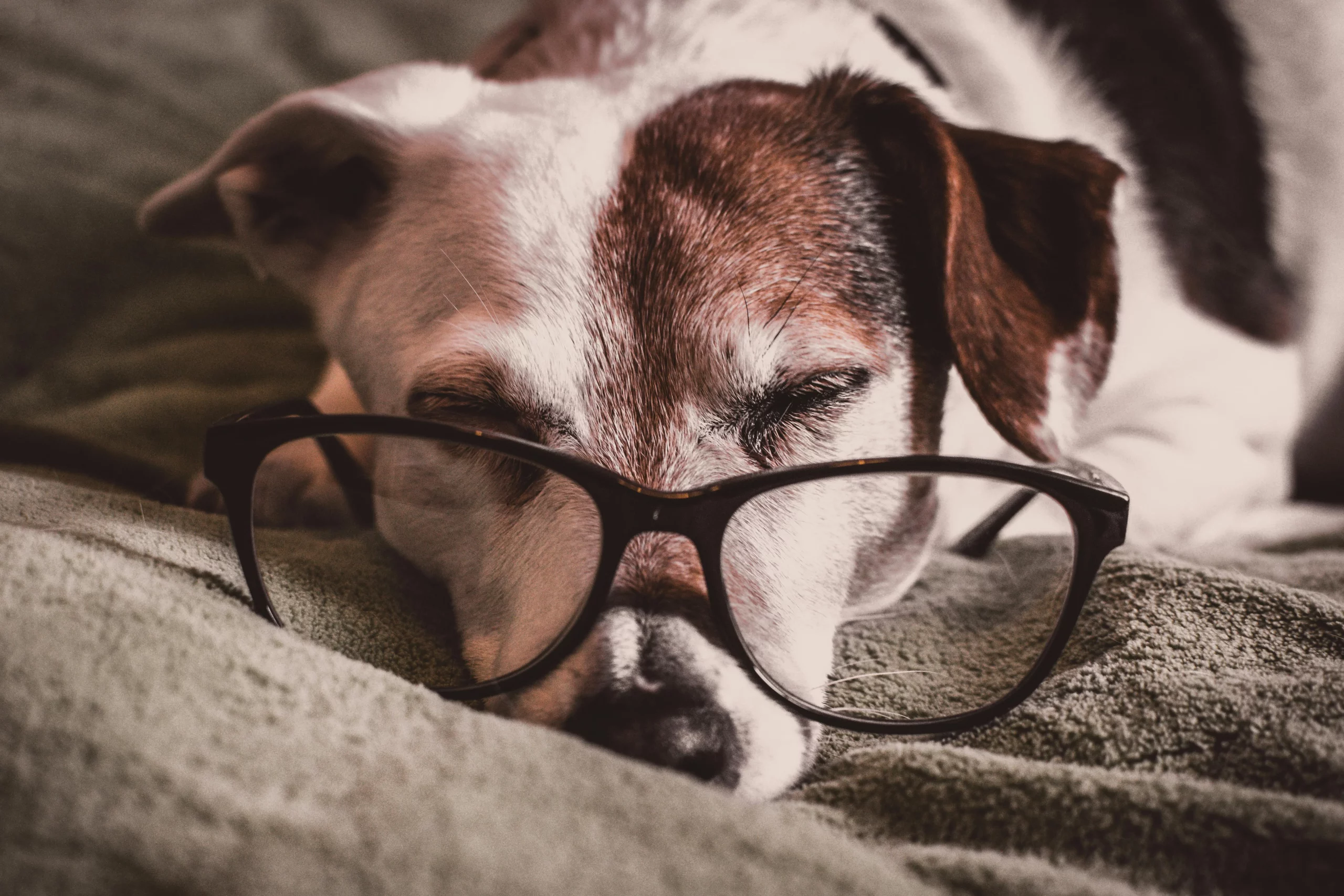Doggy Dreams: Decoding Your Pup’s Sleeping Positions
Curled up in a ball, sprawled out like a starfish, or sprawled on their back – our canine companions come in all shapes and sizes, and their sleeping positions are just as varied. While a snoozing dog is undeniably adorable, their posture might actually reveal some interesting insights into their emotional state and physical comfort.
This blog delves into the fascinating world of canine slumber, exploring the different sleeping positions dogs adopt and what they might tell us about their mood, temperature regulation, and even health.

The Language of Sleep Positions:
-
The Lion’s Pose: Curled up in a ball with their tail tucked around them, this position offers warmth and security. It’s commonly seen in puppies, nervous dogs, or those seeking comfort in cold weather.
-
The Side Sleeper: This relaxed position with legs extended indicates a feeling of safety and contentment. It allows for optimal heat regulation and is a common sleeping posture for healthy, adult dogs.
-
The Superman: Lying flat on their belly with legs splayed out, this position might seem unusual but can be comfortable for dogs with short fur or those seeking a cool surface on hot days.
-
The Donut: Curled up in a circle with their nose touching their tail, this position offers warmth and security. It’s similar to the lion’s pose but with a tighter curl, often seen in smaller dogs.
-
The Back Sleeper: This exposed position with legs sprawled open suggests a feeling of extreme comfort and security. It allows for maximum heat dissipation and is typically seen in confident, relaxed dogs.
Important Considerations:
While these interpretations offer a glimpse into your dog’s inner world, it’s crucial to remember that these are just general guidelines. Several factors can influence a dog’s sleeping position, including:
- Age: Puppies tend to sleep more curled up, while older dogs might favor positions that are easier on their joints.
- Breed: Some breeds, like Greyhounds, are naturally more flexible and may sleep in unusual positions.
- Health: Pain or discomfort from underlying medical conditions can influence how a dog sleeps.
Beyond the Basics: Additional Sleep Positions
Here are some less common sleeping positions and their possible interpretations:
- The Sploot: Lying flat on their belly with legs splayed outwards, this position can indicate relaxation or overheating.
- The Burrower: Burrowing under blankets or pillows suggests a need for warmth, security, or anxiety relief.
- The Leaning Sleeper: Leasing against furniture or a wall for support might indicate joint pain or a feeling of insecurity.
When to Worry About Your Dog’s Sleeping Position:
If your dog’s sleeping habits change drastically, particularly if accompanied by other symptoms like lethargy, loss of appetite, or difficulty getting comfortable, it’s advisable to consult your veterinarian.
Understanding Your Dog’s Sleep Cycle
Just like humans, dogs go through different sleep stages, including light sleep, deep sleep, and REM sleep (Rapid Eye Movement sleep). During REM sleep, dogs might twitch their paws, whimper, or even bark, which is perfectly normal.
Creating a Sleep-Conducive Environment for Your Dog
- Provide a Comfortable Bed: Invest in a comfortable, supportive bed that suits your dog’s size and preferences.
Conclusion: Sweet Dreams Are Made of These: Ensuring Restful Sleep for Your Pup
Understanding your dog’s sleeping positions can be a fun and rewarding way to strengthen your bond. While these interpretations offer a window into their world, remember that every dog is an individual. Always consider their age, breed, and overall health when deciphering their sleep posture.
The most important takeaway is to create a sleep-conducive environment for your furry friend. Provide a comfortable bed, maintain a consistent sleep schedule, and ensure they get enough exercise for a good night’s rest. After all, a well-rested dog is a happy dog, leading to a more fulfilling and joyful relationship between you and your canine companion. So next time you catch your pup napping, take a moment to appreciate their unique sleep style and create a haven for them to dream sweet doggy dreams!